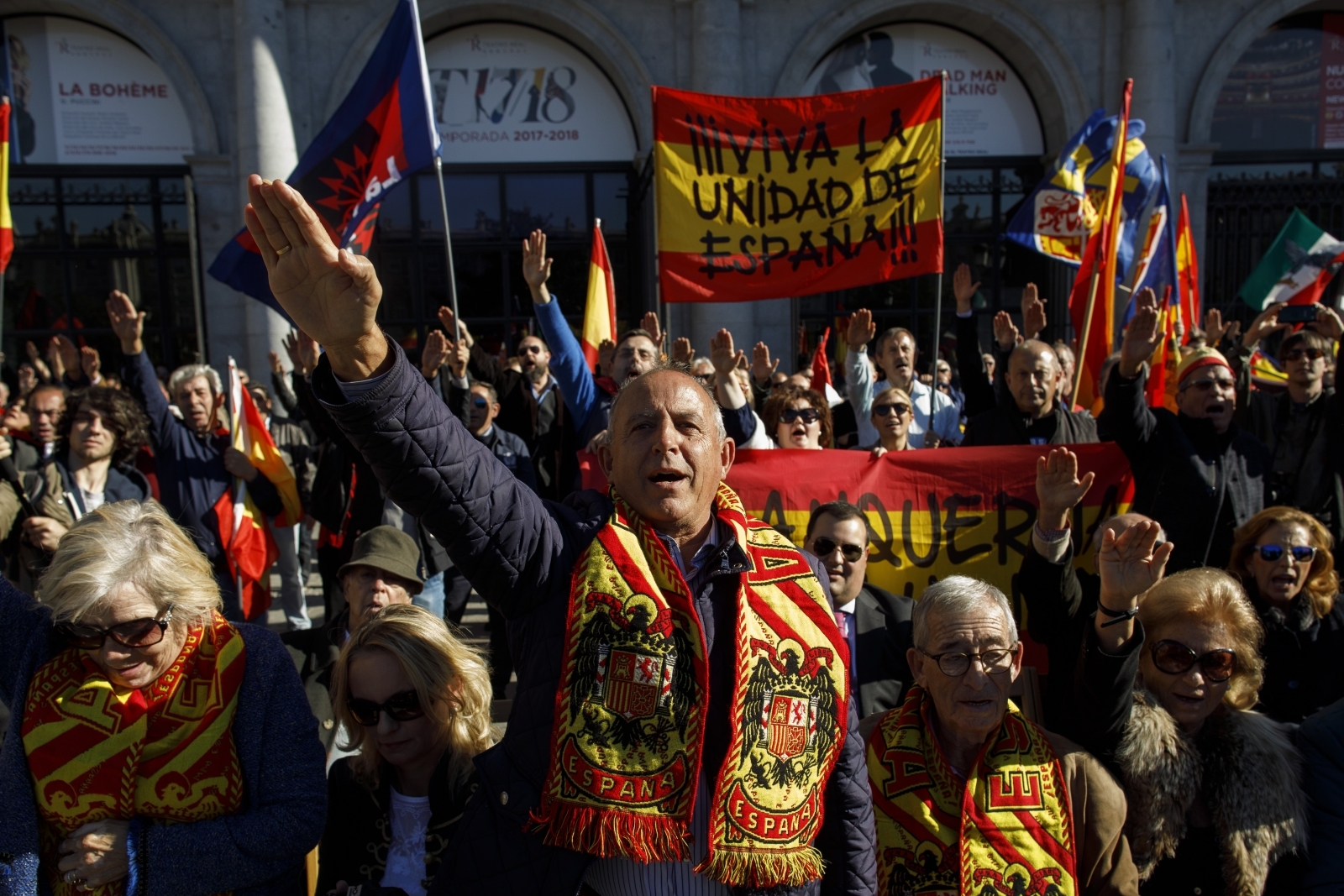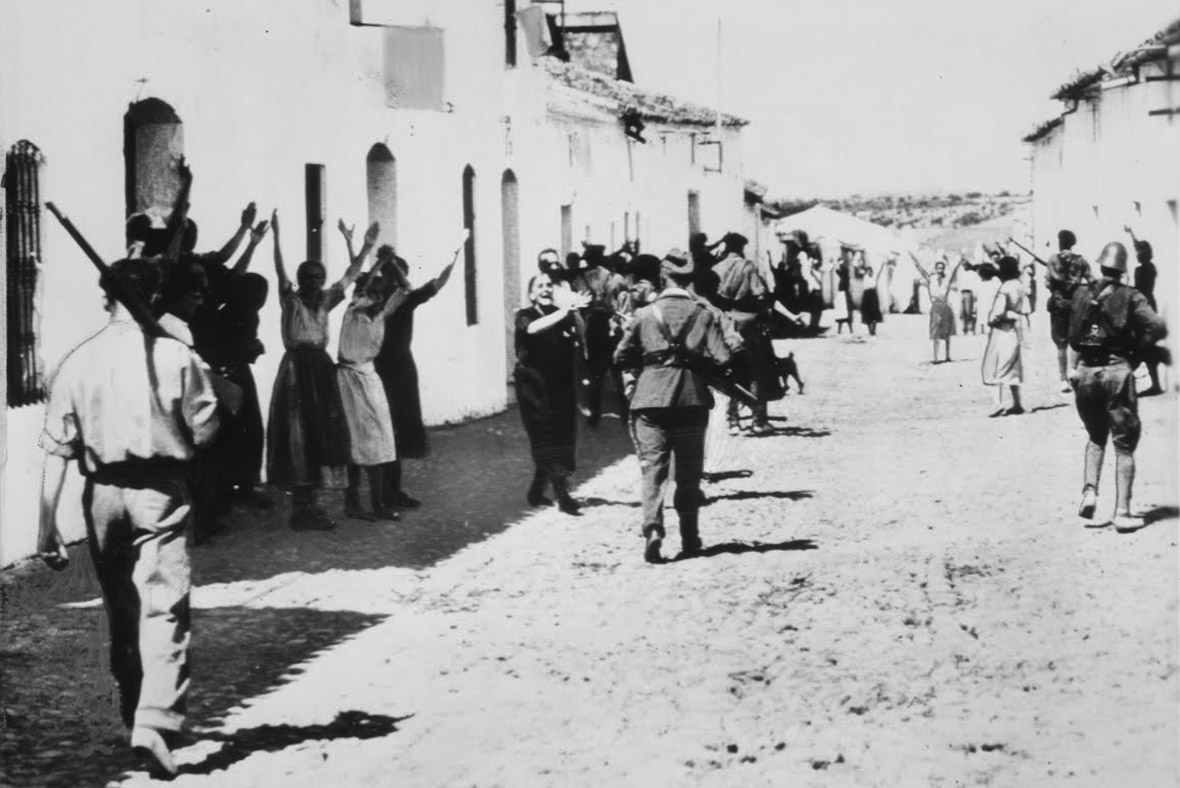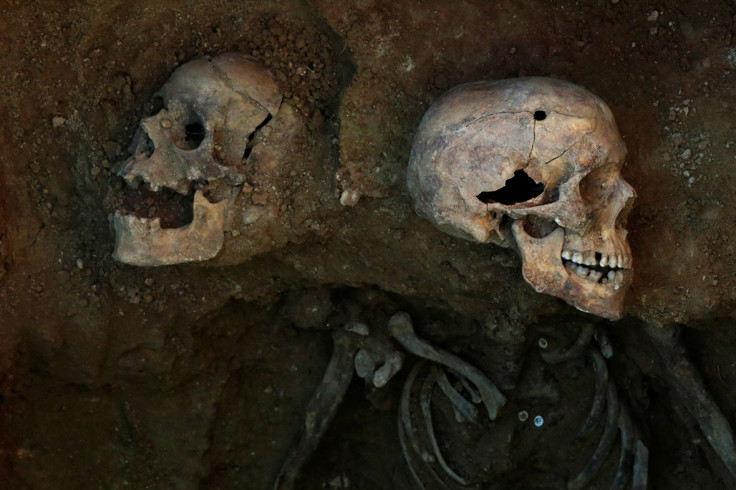Fascist salutes in Madrid mark anniversary of Spain's dictator General Francisco Franco's death
Franco supporters gather to mark his death and that of José Antonio Primo de Rivera, founder of the nationalist Falange Española party.
Far-right supporters giving fascist salutes have held rallies to commemorate the anniversary of the death of Spain's former dictator Generalissimo Francisco Franco, who died on 20 November 1975. Franco supporters gather every year to mark his death and that of José Antonio Primo de Rivera, founder of the nationalist Falange Española party, 42 years earlier. He was executed by the republican government on 20 November 1936, during the Spanish Civil War.










Franco came to power in 1939 after a military coup and subsequent Civil War which left an estimated half a million dead. The conflict began on 17 July 1936 when a group of right-wing generals staged a coup, aimed at overthrowing Spain's democratically elected government. The coup was supported by military units in many cities around Spain. However, some of the country's biggest cities, such as Madrid, Barcelona and Bilbao, remained under government control.
Within days of the coup, Hitler and Mussolini intervened on the side of the insurgent generals. The Soviet Union came to the aid of the Loyalists, also known as the Republican forces. Britain, France and the US decided to remain neutral, even imposing – and enforcing – an embargo on the sale of arms to the Republic.
The battle for control of Spain turned into a horrific conflagration that lasted almost three years. The new medium of photojournalism brought horrifying images of the conflict into homes around the world. In an unprecedented display of international solidarity, some 35,000 volunteers from 50 nations joined the International Brigades and risked life and limb to defend the Republic.
From their strongholds in the south and west, the Nationalists – supported by Italian and Moroccan troops – advanced northwards, capturing cities from Republicans weakened by the embargo. Barcelona and the rest of Catalonia fell in early 1939, and Franco's troops marched into Madrid in April.










In 1975, after nearly four decades of absolute rule, Spain's Generalissimo Francisco Franco died, two weeks before his 83rd birthday.



Historians estimate as many as 500,000 combatants and civilians were killed on the Republican and Nationalist sides in the war. Atrocities were committed on both sides. The victors under General Franco executed thousands more after the war. It is estimated that over 100,000 men and women were executed and buried in unmarked graves during the conflict.

It is thought there may be more than 2,000 mass burial sites across Spain dating from the 1936 to 1939 civil war and the ensuing dictatorship of General Francisco Franco. Only a handful have been dug up due to a lack of funding and Spain's "pact of forgetting" pardoning political crimes committed in the past, on its return to democracy in the 1970s. However, there is increasing interest from a new generation to face up to the country's past.
Fascist salutes and Franco-era flags are increasingly seen in Spain, particularly at rallies protesting against Catalonian independence.
The seeds of Catalonia's modern independence movement germinated during the authoritarian regime of Francisco Franco between 1939 and 1975. Franco banned the official use of the Catalan language and executed or imprisoned opposition politicians and activists. Stories of that repressive era are part of the lore of many Catalan families.
After Franco's death, Spain became a democracy, and Catalonia was granted a degree of autonomy, with a regional government, its own police force and control over education. Public schools now teach primarily in Catalan, and Catalonian and anti-fascist symbols are flown with pride in Barcelona and across the region.
Franco supporters will attend a controversial religious Mass held at Madrid's San Francisco de Borja Catholic church on Monday (20 November) to pray for the eternal rest of the former dictator's soul.






















